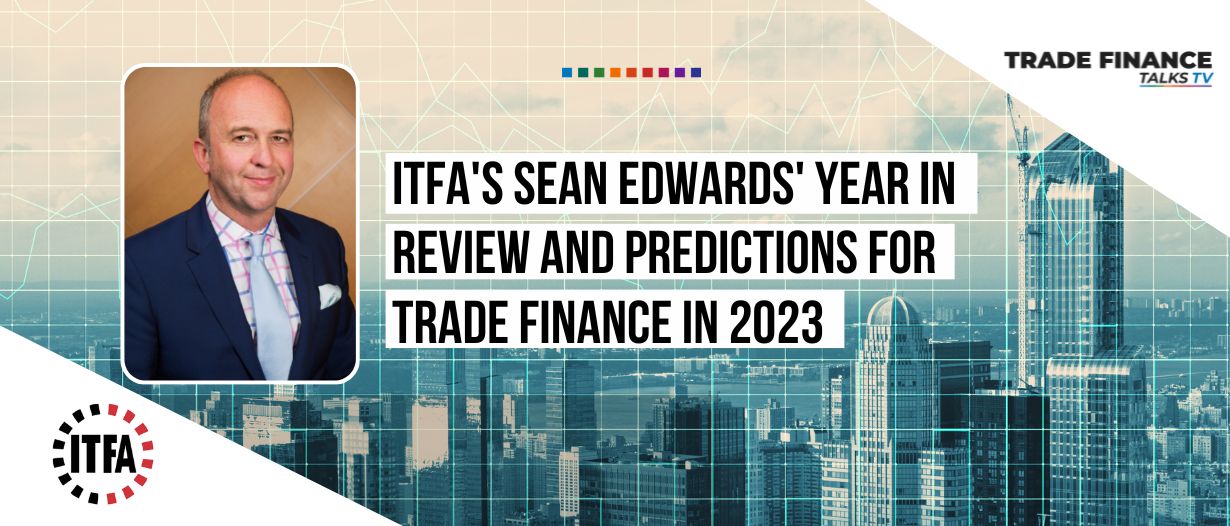Estimated reading time: 4 minutes
To learn more about the regulatory changes and reforms taking place in the trade finance industry, Trade Finance Global (TFG) interviewed Sean Edwards, chairman of the International Trade and Forfaiting Association (ITFA).
According to Edwards, reducing the record-high $1.7 trillion global trade finance gap will be amongst the most important considerations facing the trade finance industry in 2023. The trade finance sector is developing several tools to address this issue.
Updates on the Electronic Trade Documents Bill
Positive reforms to the industry’s legal framework are set to usher in a level playing field with more seamless digitisation procedures.
Edwards believes that it is important to reform electronic trade finance rules, as 80% of trade documentation globally is governed by English law.
There are currently a number of opportunities in trade document digitisation, with advancements in digital financial instruments, specifically bills of lading, bills of exchange, and promissory notes.
These instruments have long been around in digital formats, but the trade system has had limitations in relying on an outdated system.
The Electronic Trade Documents Bill was introduced in the UK’s House of Lords on 12 October, and the bill has now completed its second reading as part of an expedited procedure.
Next, the bill will go to the House of Commons, and ITFA are very confident that it will become law in early 2023.
ITFA and the ICC United Kingdom worked closely with the Law Commission, a statutory independent body in the UK, to bring the bill to fruition.
Adopting the Model Law for Electronic Transferable Records (MLETR)
According to Edwards, the adoption of the Model Law for Electronic Transferable Records (MLETR), currently used in Singapore and Abu Dhabi Global Market (ADGM), has been another big boost for the industry.
The United Nations Commission on International Trade Law (UNCITRAL) developed MLETR to provide a framework to facilitate the application of digital documents as negotiable instruments in place of physical hard-copies.
Edwards believes that the new e-commerce and free trade agreements are also gathering momentum. “There is testing at the moment of the UK-Singapore e-commerce chapter using actual use cases.”
Blockchain, digitisation and digitalisation
The Asian Development Bank (ADB) released a report in October 2021 that found the global trade finance gap reached a record $1.7 trillion in 2020, a 15% increase from 2018.
Edwards believes that digitalisation is the only practical way of eliminating the trade gap. Absent digitalisation, additional incentives, or subsidies, closing the gap will be extremely difficult.
Edwards said, “Digitisation or digitalisation is not just about blockchain. Blockchain has a very potent case for certain areas, but it is not the only thing powering digitalisation.
Cost efficiency is powering digitalisation, and the desire to move down and into the supply chain is a deep tier financing initiative to get to the smaller suppliers to reduce the trade gap.”
Outlook for global trade in 2023
Global trade is significantly impacted by inflation, and trade volumes have recently increased considerably, in large part due to commodity price hikes.
For trade finance firms, this translates into requests for bigger facilities and more liquidity for commodity traders.
Small- and medium-sized enterprises (SMEs) are uniquely impacted by the rise in commodity and trade finance prices. One way to solve this problem is by increasing liquidity available to SMEs, or through the tokenisation of assets.
Edwards said, “We need to find ways to work [with] SMEs, as they are becoming increasingly pushed to the end of a longer queue.”
To help solve some of these issues, ITFA is working on tokenisation through its Digital Negotiable Instruments (DNI) initiative. Through the DNI, one can digitise “a very simple instrument… for example, a promissory note.”
Once the instrument is digitised, it can be tokenised and listed on an exchange. This is just one of several promising ways to help SMEs during the increasingly difficult times.
Edwards believes “There’s a lot of interlinked issues here, but there’s definitely interest in [solving these problems].”
























